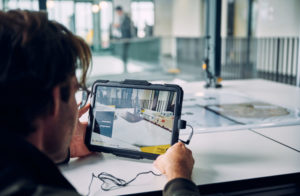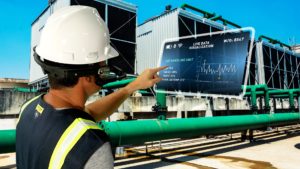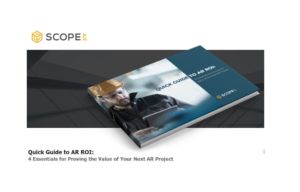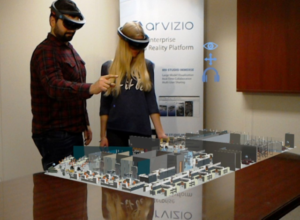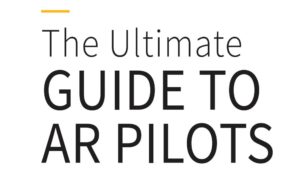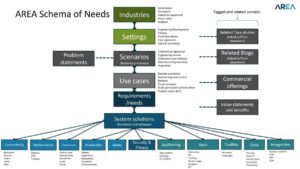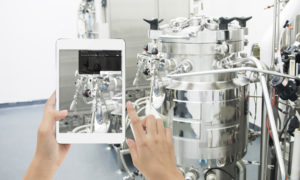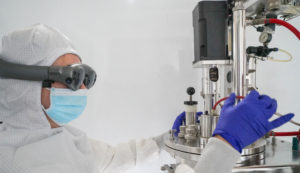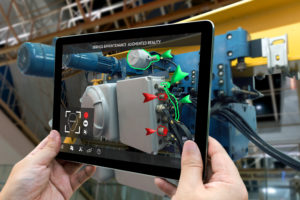New AREA member SmarTECHS occupies a unique space in the AR ecosystem as a software publisher of connected workspaces for industrials workers and users of industrial equipment. With the stated mission to “bring dignity and meaning to industrial workers”, SmarTECHS provides software for improving the safety, productivity and just-in-time training of industrial workforces.
We spoke with Remy DeVlieghere, SmarTECHS founder and CEO, to learn more about the four-year-old company.
AREA: Prior to founding SmarTECHS, you had a long and successful career in supply chain management and procurement. What inspired you to start a new company in 2016?
DE VLIEGHERE: Over the course of my career with four global enterprises, my teams and I have produced about two billion dollars in economic impact … cost elimination, faster go-to-market, and near elimination of safety incidents and related fines and penalties.
When I started my career, leaving my family’s farm just outside of Paris to pursue a business career, I made myself a promise to learn as much as I could before starting my own business. So in 2016, that time had arrived. I had mastered global supply chains and organization transformation. I also grew tired of the corporate nonsense and oversized egos.
I took stock of my career and what was going on in the world. It was clear to me that the digital transformation wave had only just begun to move through laggard industrial-sectors of manufacturing, energy and power generation, field operations, and supply chain logistics. For the most part I saw a lot of top-down “strategic” attempts to drag mature industries into the 21st century with few successes, lots of damaged careers, and thousands of “zombie” pilots and dead proofs of concepts. Why? Because management consultants and complicit executives made the whole thing too complex, overly focused on advanced technology, and difficult to scale from their poor technology choices.
Then I spotted the opportunity for me: All companies have trouble consuming innovation, especially technology innovators … they’re the worst! What I mean is this: most companies do not have systems, processes, and people for sourcing new innovations and putting them to work in a simple and safe manner. They want to innovate. They recognize the existential threat to innovate. They promised their boards and investors grand innovation initiatives. But, and I say this as a successful transformation leader at four global enterprises, most companies lack the infrastructure, know-how, final metrics, and operational capabilities to innovate.
So I formed SmarTECHS to address that. We call it Innovation Enablement. We target industrial operations. We specialize in the rapid design and deployment of what we call “production trials” … fully operational and ready to scale from 10 uses to 100,000 user in weeks, not years.
AREA: How would you describe SmarTECHS?
DE VLIEGHERE: We are a software publisher. We provide tools and assistance for industrial operations, process consultancies and manufacturers to design and provision what we call connected workspaces to industrial workers and crews.
Unlike 99.9 percent of other software publishers, we specialize in the use of head-mounted computers with a hand-free voice interface in dangerous, noisy and windy industrial environments.
Some people call us a software vendor of Augmented Reality applications. And, sure, at a surface level, our products look like AR. But as soon as you put AR in dangerous, noisy and complex industrial environments, where users must have 100 percent line of sight with no visual obstructions, that eliminates most AR glasses and headsets. Also, safety demands that the hands-free voice interface must deliver 99 percent accuracy in 95 decibel environments, eliminating all speech technology from Amazon, Apple, Google and Microsoft.
In fact, OSHA has prohibited use of most AR glasses and all VR goggles for active use in the field or assembly lines. Our software runs on the only device that certified for use in Zone 1 with ignitable concentrations of flammable gases, vapors or liquids.
So instead, we use the term Assisted Reality and emphasize our heads-up display well below the line of sight.
Also, unlike traditional software publishers, we assist program managers in managing all phases of small-scale innovation lifecycles with an emphasis on the due diligence of getting funded, iteration of same-day product builds, and rapid deployment of production trials.
AREA: So SmarTECHS is really about taking complex technology, making it practical and useful, and guiding clients through the whole process.
DE VLIEGHERE: Exactly. We live by the motto, Make it simpler, but only better. We apply that idea of simpler but better to the three key phases of Innovation Enablement.
We start with a strategic end in mind … a fully operationalized business capability that measurably improves safety, productivity and control of business processes … and work backwards in three phases.
First, we simplify and enable the buying process for program leads in safety, worker training, customer service, process improvement, and digital conversions.
Second, we simplify and enable the often complex and problematic process of delivering Production Trials, taking that from four to 10 months with 80 percent failure rate to one to two months with 95 percent success rate. We solve the pernicious problems of little or no content to use in dangerous industrial environments, weak cybersafety, and the inability to modify applications within minutes or hours instead of weeks or months.
Third, we simplify and enable rapid provisioning of managed workspaces for thousands to tens of thousands of users.
Most otherwise solid prototypes fail to scale because of three root causes: wrong technology, weak cybersafety, and lack of relevant and up-to-date content for use in dangerous industrial environments. We make the entire innovation cycle simpler and better.
AREA: Tell us more about your clients.
DE VLIEGHERE: We target three customer segments. But first a word about clients and customers. Clients typically buy services from firms who spend a lot of money on people who deliver the service. On the other hand, customers buy products that just get jobs done without needing a lot of expensive services to realize the expected value of the product.
Our first targeted segment consists of industrial equipment manufacturers and original product design firms who are transforming themselves into customer-connected enterprises. These customer-connected enterprises, such as Haier or Tesla, exemplify the strategic aims of the $1 trillion now being invested in the “digital transformation” race. We increase the ability of OEMs and OPDs to win in this trillion dollar market.
These OEMs and OPDs take advantage of our “simpler only better” approach to innovation enablement to assist their customers in producing fully supported Production Trials that, upon certification by safety, legal, and IT, will scale across a global enterprise and their supply chains.
Our second targeted segment is consulting organizations who deliver safety, productivity, and training programs and, increasingly, digital transformation platforms for customer-connected enterprises. These consultancies choose us because our “simpler only better” approach to innovation enablement as well as their ability to “dematerialize” otherwise costly labor-intensive revenue streams. They use our products to create and monetize their own digital products, transforming anonymized client and public data into proprietary industry insights and advisory subscriptions. That’s a real game changer.
Our third audience is large regional or global enterprises in heavy industries with lots of mission-critical assets and thousands of technical and trade professionals working in confined and dangerous spaces in two or three shifts a day. Often they need just one or two immediate fixes to an urgent and expensive problem and then scale slowly from that into more organic, just-for-me workspaces.
For example, they may want to add one or more remote experts to a work detail, increasing first-time fix rates by 50 to 80 percent. Or they want to add full high-def video documentation of a job order, speeding the accounts receivable cycle and creating digital media assets for later use in training and troubleshooting.
AREA: Are your clients all over the world?
DE VLIEGHERE: Pretty much. Our business plan called for us to start with local clients, but very quickly clients started taking us to every corner of the world. As a result, we keep adding new international languages to the platform and mileage to our frequent flyer programs. Today we have global clients in manufacturing, aerospace, and military sectors. Even when the client is local, the supply chain is global. Without exception, our clients need the SmarTECHS platform to scale across global networks of suppliers.
AREA: What motivated you to join the AREA?
DE VLIEGHERE: We just transitioned from a R&D stealth mode into full commercialization. We’re humble enough to accept that we have lots to learn about various industry initiatives, emerging technologies, and how industrial enterprises want to buy and harness innovation from a scrappy startup!
Being an AREA member will help us better understand the AR community and perhaps nudge a few in the direction of Assisted Reality for industrial customers. Inside SmarTECHS, we think of the AREA as a “watering hole” or oasis somewhere on the Digital Silk Road, where innovators of all stripes meet and share their road stories.
We expect that technology innovation will continue accelerating and produce a number of fault lines in business foundations. The AREA will help us understand of those developments and perhaps how best to exploit them.
